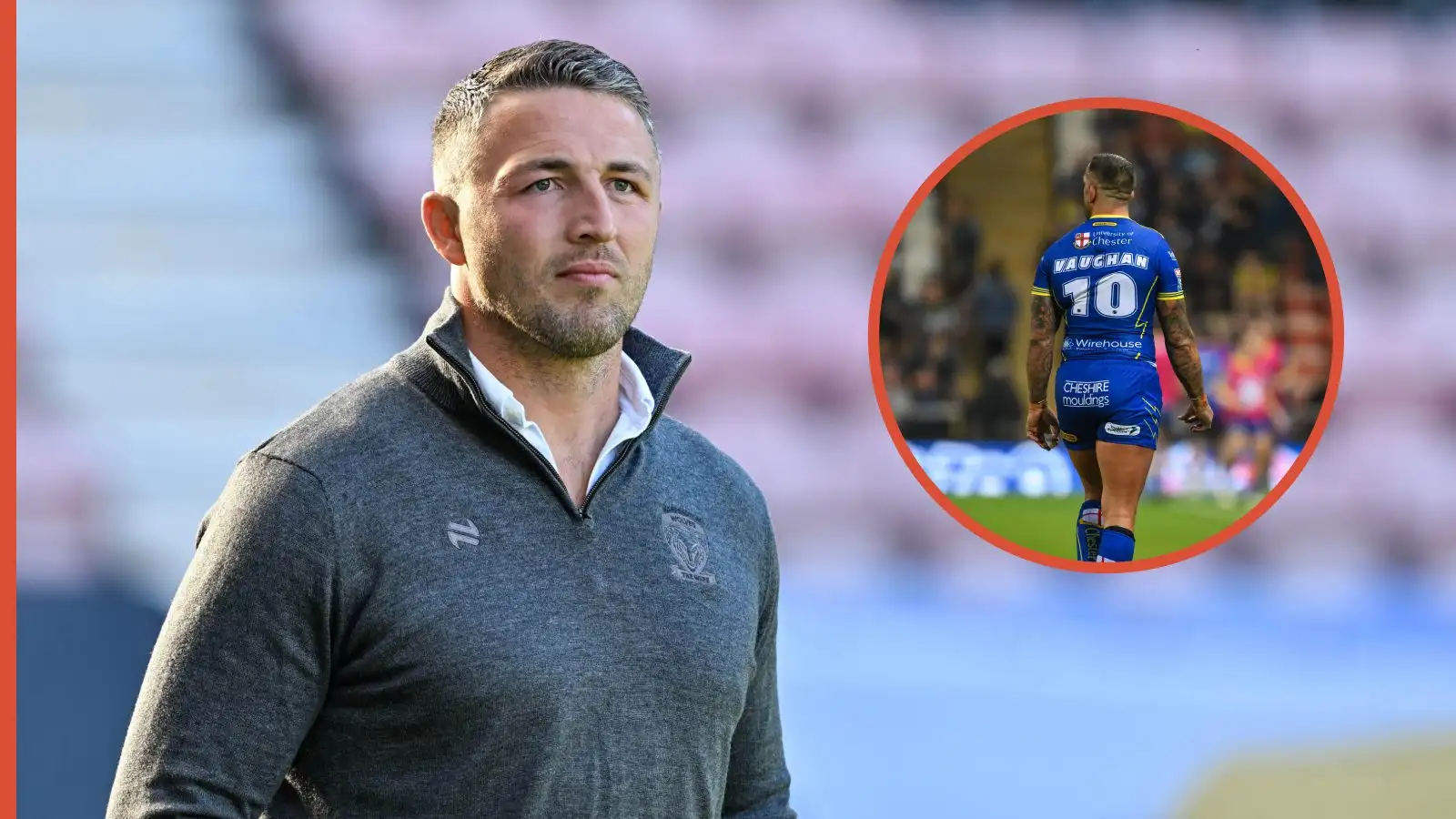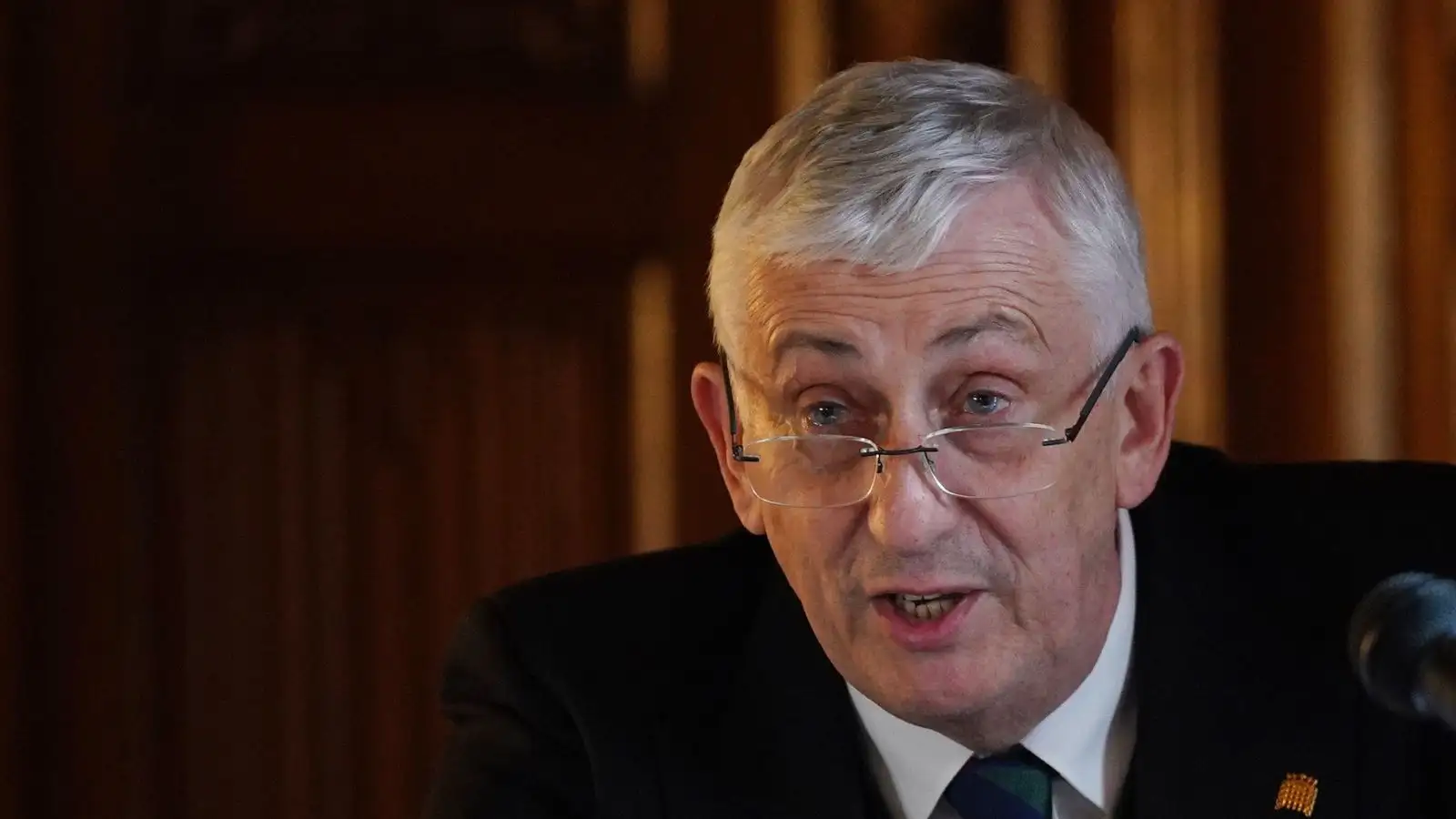Why the RFL has announced two law changes, including reducing tackle height

Photo by Craig Cresswell/News Images
It is inevitable that the way the game of rugby league is played will change with the increased focus and education on player welfare, and particularly head contact.
The RFL has now announced its first steps to further changes, notably around the tackle height – a change in which the Rugby Football Union has received widespread negativity, when they announced they were reducing their tackle height to below the waist.
The changes in rugby league aren’t quite as drastic, but do show the need for change.
What law modifications are being trialled?
The RFL is trialling two law modifications in the Academy competition from June 15 to July 30. They are:
- The legal tackle height will be reduced to below the armpit at initial contact, with penalisation for contact on the head and neck at any point;
- Kick-offs will now be taken from 10 metres further forward – on the opposition’s 40-metre line, rather than the halfway line at present – to reduce the impact of ensuing collisions.
How have the changes come about?
The RFL’s Strategic Lead for Performance, Science and Research, Professor Ben Jones of Leeds Beckett University has been working on the TaCKLE project since 2021, which tracks the contact, load and exposure metrics in tackles and contact play in rugby league.
Over 800 players at all levels of the sport have been fitted with instrumented mouthguards allowing the measurement of head impact and head accelerations. A head acceleration is measured on all players involved in contact, with the data showing that head acceleration is lower for both the ball carrier and tackle when contact is made with the torso as opposed to higher on the body.
The research team and Head Contact Working Group proposed a number of rule modifications, which would theoretically reduce a player’s head acceleration and contact load exposure, both within a match and therefore accumulatively across a season and players career.
The ongoing legal action by an increasing group of former players, who allege that the governing body should have done more to protect them from the impact of head collisions, is undoubtedly having an impact on the nature of the sport moving forward.
However, it should be noted that the RFL’s approach to concussion and head contacts has been pro-active long before the legal action.
What is the purpose of the trial?
The impact of the trials will be evaluated through the following months, allowing a recommendation to be made to the RFL Board about the possible implementation of the law modifications more widely across the sport.
Quite simply, it is to try the law modifications and assess their success in terms of the wider goal of the project, prior to them possibly being implemented on a wider scale.
Professional Ben Jones said: “The purpose of these law modifications is to assess whether they reduce concussion, risk factors for concussion, head contact and head accelerations for players. We will also evaluate how coaches, players and match officials found the law modifications.”
Were any other rule modifications considered?
A number of modifications were suggested and reviewed by a wider stakeholder group which included 16 Super League and 20 Academy coaches, six performance staff, two medical staff, 11 match officials, 15 current players, and one retired player.
Stakeholders rated the importance (eg will the rule modification reduce the frequency of high magnitude head accelerations?) and feasibility (eg does the rule modification compromise the dynamics of Rugby League and is it easy to implement for players and referees?).
The laws being trialled had the highest rating of importance (tackle height) and feasibility (kick off location).
Why does there need to be change?
The RFL has been leading the way in sport, thanks to the research of Professor Jones and his team, in trying to combat concussions and the relevant side effects.
As part of that, there has been a tightening of concussion protocol, and changes to the rules – such as the introduction of an 18th man on match day, who can be used if a team suffers three head injuries in one game. This is designed to encourage players to recognise and identify the symptoms of concussion.
The return to play protocol has been extended to a minimum of 12 days.
Tweaks to the laws have been seen necessary to reduce the number of head high tackles and high contacts, which pose the greatest risk to concussions and head injury.
When the RFU controversially changed their laws earlier this year, it said they were “designed to improve player safety and informed by data, this change aims to reduce head impact exposure and concussion risk in the tackle for both the ball carrier and tackler.”
The RFL are hoping that their trial will enable a less drastic step than their union counterparts, with the RFU having received significant backlash, particularly from the community game.
What have the RFL said?
The governing body are aware that the changes could have a big impact on the long-term, but for now are looking forward to seeing how the modifications are responded to during the academy trial.
They were also understandably keen to avoid the sort of backlash and negative publicity that the RFU received, and they appear to have done that courtesy of the changes being a little bit less dramatic.
Dave Rotheram, the RFL’s Chief On-Field Officer, said: “This is another significant step in what has been an extensive research project as is appropriate and necessary for such an important issue for Rugby League and other sports.
“We are aware of the considerable practical implications and challenges for players and coaches in the Academy competition of the law trials, especially regarding tackle height, which is why we have worked hard to communicate with coaches and Heads of Youth, in terms of the level of research that has led to these recommendations, and how they will be implemented.
“Players have already been introduced to the concept of the proposals at their clubs, and they now have another six weeks or so to prepare for the trials.
“By playing under these trial law changes, everyone involved in the Academy competition this summer will be making a major contribution to Rugby League’s response to this major issue – and I thank them in advance, on behalf of the sport, for that.”
War of Roses: Yorkshire v Lancashire return idea discussed by pundits



